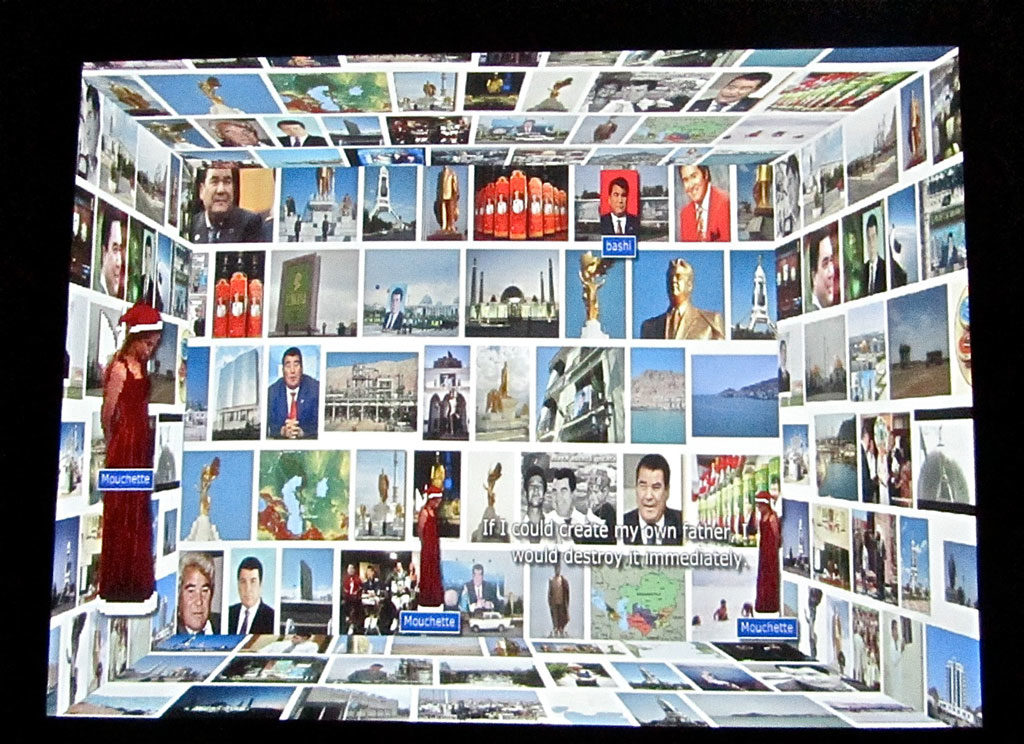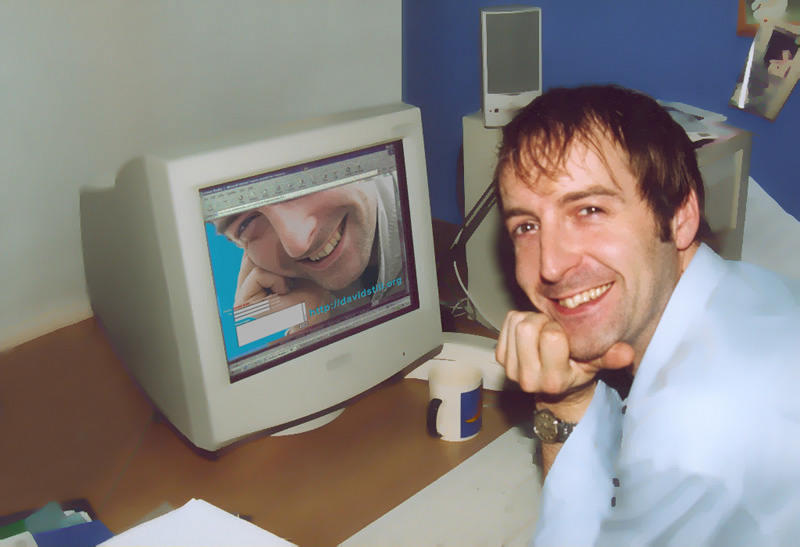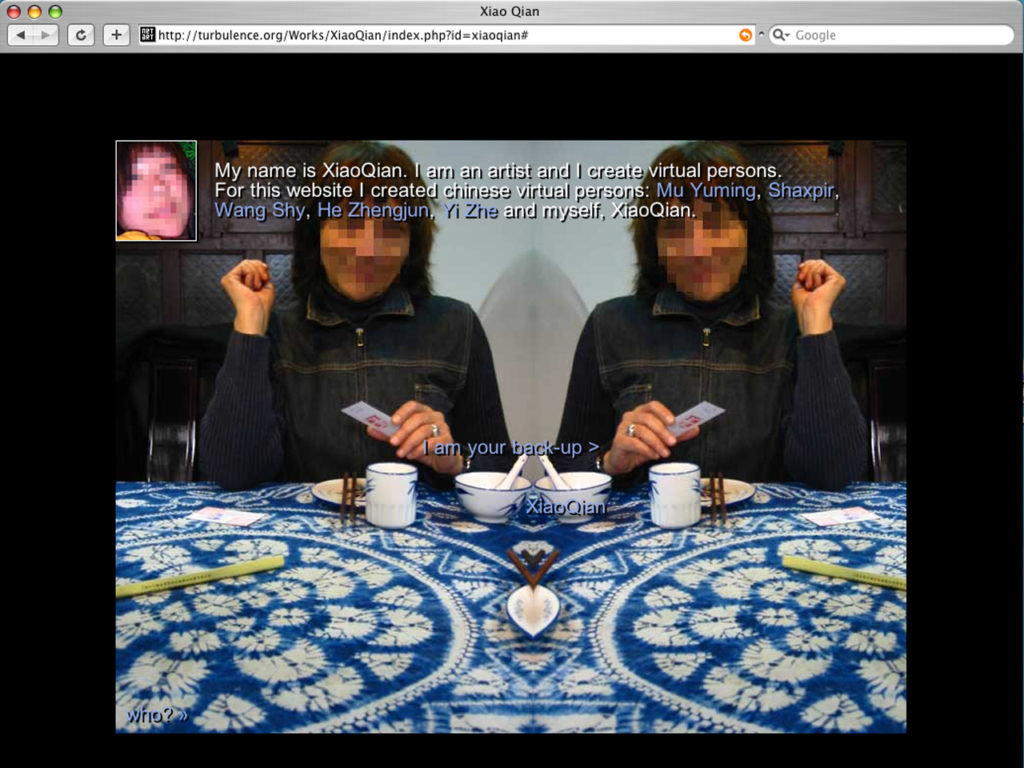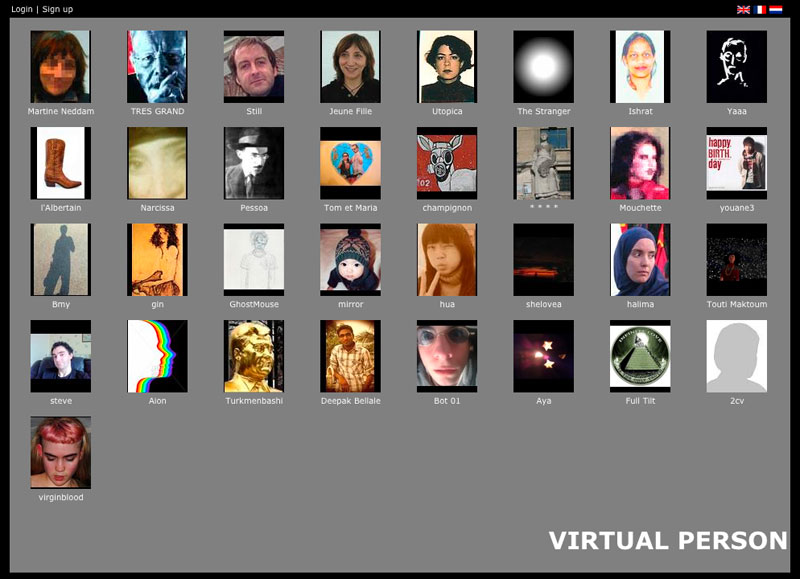By Martine Neddam,
Your Domain Name Registration Has Expired!
You usually receive several reminders from your registrar warning you about the impending expiry date of your domain name. The first one arrives three months before the date, which is much too early to spend any time on, so you delete that e-mail until, a few weeks later, another warning from your registrar suddenly feels like an emergency threatening to stop everything you’re doing. You grab your credit card and try to renew your registration online.
The warning message, which should have come at just the right moment, never arrived because you had suppressed that old e-mail address, which you thought was only full of spam anyway.
Finally, you remember the expiry date just one day before it’s due. You want to log onto the registrar’s site but you don’t remember which registrar it was. Network Solutions? The one from the Origins? Directnic, the cheapest, you know? Your own webhost? (Most webhosts handle domain name registrations but transfers from other registrars don’t always work.)
You finally work out which of your five different registrars is the correct one, but can’t find the necessary login code and password because you last used it two years ago. You eventually manage to enter the registrar’s interface, but when you want to pay for renewal (three years, that’s the maximum here), your credit card is rejected, and after three attempts, concerned that your credit card number is being hijacked, you stop trying, while your domain name shows no sign of having been renewed.
Your domain name has now expired, and you receive regular warnings, but you can’t find a way to contact this particular registrar, except via the website that refuses your credit card. There, you can use a support page, which sends back automatic replies with a very long code number in the subject header, but this is never followed by a real message written by a human being responding to your complaint.
Your domain name has finally fallen into the hands of ‘domain-name-snatchers’, the resellers of domain names. Now you’ll find a porn site under your domain name, or a webpage promoting the sale of expensive domain names (why isn’t yours included in the list?), or a portal redirecting you to different commercial sites organised by categories.
All your content is still exactly in the same place on your server at the webhost, but nobody will ever be able to find it without your domain name. Search engines won’t be able to find it either, and because of their long-term memory and archives, will remember the old domain name forever. How long will it take you to rebuild your linkage under a different domain name and have the same ranking in the search engines? Will your domain name ever become available for a new registration?

‘Couldn’t connect to database’
You are browsing your site, clicking on a link to review the next entry on a board and suddenly the message ‘couldn’t connect to database’ appears (or a much more obscure message with the same meaning). Your site is there, the top of the page is there, but the dynamic content is no longer accessible.
You become aware that your dynamic content – in other words, the entries of all your users – is stored on a different server, the MySql server, which might be down while your http server is still up and running. You realise that your website is hosted on two separate servers, on two separate hard disks, which doubles your chances of downtime.
As the years go by and your users’ participation continues and your database expands, becoming the most precious part of your art, you are constantly confronted with the many complexities of having a database server.
You have a local copy of your website on the hard disk of your personal computer, including all the html pages, images and Flash files, which is normal since you created all of them on that computer. But your database only exists online on the database server. You can only display your website through an Internet connection and not from a local copy.
Once your webhost went down while you were presenting a lecture about your website at a conference about art on the Internet. Out of desperation you tried to browse your site from your local copy but the pages displayed all the PHP codes instead of the dynamic content. Confronted by all this code and your evident confusion, your audience became really impatient and didn’t even believe you really were the author of a virtual character. Later, you ask your database programmer if you could keep a copy of the database on your hard disk – just in case, even if it’s not up to date – but he explains that the only way to do this is to run a local server, which is far too complicated for you to sort out, especially if you’re using a Mac and it’s pre-OSX, with OS9 not being able to run a local server.
You try to accept the situation but sometimes your relationship with the Internet feels like you are a child depending on its parents, being disconnected for brief moments each day. Sometimes you feel like you are a part of the Internet in the same way that an unborn baby is part of its mother, nourished by the umbilical cord while resting inside a soft bubble.

We don’t accept online documentation
You are assembling your documentation to apply for a grant from the Netherlands Fund for Visual Arts (Fonds BKVB). In their guidelines you read that they accept digital files and websites, but only on a CD-ROM and not online. You call them and insist that your site has a database with important user-generated content and can only run online. They explain that it’s their archival policy to keep and store the information and material from all the artists they sponsor, which is why they requested your website on a CD-ROM. Besides, they want to be 100 per cent certain that the documentation is available for the jury which only meets once a month, so they don’t want to run a risk with your information on a website.
So you decide to make screen snapshots of the database, a large series of pictures that you edit to a proper size in jpg format. You add reference titles and descriptions of the contents and combine all of this in a multiple window website (not online) that you design for the occasion, and it ends up being quite an elegant simulation of the user-generated content that can be browsed online. It is time-consuming work, but the results are good enough and the grant is awarded.
Ultimately you work out that this visual simulation might prove useful, and you decide to always keep a copy of this CD-ROM with you, in your bag, so that you can provide an offline impression of your website at any given moment, on any computer.
But the next time you want to use that CD-ROM, only a year later, you discover that the javascripts supporting the pop-up windows do not function anymore; they have become outdated and are now incompatible with most browsers.
Hopefully nobody at the Fonds BKVB archives will ever look at the contents of your CD-ROM again.

Database back-ups
Your database programmer once made a mistake in which the time-stamp of your entire database was destroyed. All your users’ entries and all the text in your database was still there, in the right categories, but all under one date: 1.1.1970.
This was an incredible disaster, but a very ironic one: you would rather have lost the entire database than just this small ‘piece of time’, which was, you realised, the backbone of a very heterogeneous collection of snippets of texts.
Fortunately, the webhost had a policy of a completely backing-up data every two days and could retrieve a two-day-old version of your database with the time-stamp intact. Just in time, because few hours later the back-up system would have overwritten a new back up with an invalid time-stamp.
That’s when you realised the value of having a back-up system of your own and should no longer rely on the webhost performing miracles.
So, do you have a good automatic back-up system of your own now?
To be honest, you don’t really know….
A good back-up system would automatically store a version of your complete database on a different hard disk every two days, and perhaps save one extra version each month in case of unnoticed damage. You discussed it with Zenuno, a very gentle database programmer who helps you run your server on a volunteer basis. Zenuno works for a Portuguese government website in Lisbon but is based in Amsterdam, and has a great deal of experience in security and back-up issues. You were reassured by his knowledge and his promise that he would set up your back-up system.
Now, writing this, you realise that you haven’t discussed this particular problem with Zenuno since you first raised it, as each time you contacted him since, it was because you needed help with a different emergency, and the back-up issue wasn’t part of that emergency.
So you’re not certain if you have a database back-up system or not, and if you do, you don’t really know what it does.

Recent updates and user complaints
None of the content provided by users of your site is published automatically. Everything you receive, all the reactions to the different works of online art, enters a customized moderator’s interface where you read, classify, publish or delete the entries. When an entry is published the author receives an e-mail informing him of its publication, with a link that enables him to delete his e-mail address from your database, all this wrapped inside a special narrative by Mouchette, written in her house style and related to each online narrative.
You never publish immediately, you always want to wait a few days before you put the text online and notify the author. Your intention is to shape your online relationship with the participating user in order to increase the attention span from a few minutes to a few days. If the delays last too long, a week for example, the attention might be lost and your e-mail becomes a message from an intruder at best; in most cases it is marked as spam and is blocked by the spam filter.
If you go on holiday and decide to avoid all computers for a couple of weeks – which rarely happens – you hope that your users will forget about you in the same way you try to forget about them, but what usually happens is the reverse: you are flooded with complaints and insults about a ‘dead site’ which is ‘never updated’. It’s comforting to know you have such faithful participants. To thank them for their loyalty you immediately publish the complaints about a ‘dead site’, tongue-in-cheek, classified in the ‘favourite’ category, long before you publish the more serious or pleasant entries.
You realise that a number of your participants are ‘hooked’ on your website and you wonder what would happen if you died. How long would it take for them to give up on your site? You think that this could be the measure of the attention span of a dedicated contributor.

On the Internet nobody knows you’re dead…
Like all human beings you’ve doubtless fantasised about your own death. In which ways would you be missed, how you would be remembered, etc.?
As a virtual person you fantasise about how long Internet access to your site and your database system would survive your actual death.
If you died, how long would it take your contributors to realize that nobody is maintaining the site anymore? If they send complaints about a ‘dead site’ nobody will publish them, so the information about the lack of maintenance will not alert anyone. Nobody will know you’re dead.
Sometimes, you start to calculate mentally: ‘My webhosting is paid by the year and is due for renewal in August. My domain registration is paid for two years and is due for renewal in February. The registrar will delete the domain name immediately after expiry but at least the webhost will tolerate one or two months of unpaid hosting before deleting the site. My credit card number is in their system and the webhosting can be renewed at least one more year without my intervention. My credit card is renewed every two years, in January. If I die now, how long will my site stay online and what will be removed first?’
‘After my death how many people will have surfed my site before it is removed?’ This is an easy question and it can have a precise, numerical answer through your web statistics, and long after your site has disappeared, the free statistics (webstats-motigo) site you are using will still provide this information to anyone requesting it.
Who has the codes, or your website, database and server IDs, and who may use them after your death?
Should you leave a will concerning all digital data?
How much of your digital data will stay in the public domain and how much of it do you want to remove?
Shouldn’t you already be erasing your traces?
What kind of peace will you find in your digital afterlife?

Captchas and worms
To prevent unwanted comments from entering your database you can use ‘captchas’ (titbits of warped texts, little visual riddles that can only be solved by a human mind) to block access to automatic scripts. You don’t have them because you couldn’t implement them in your database system, as it was built long before captchas existed. Consequently your database is trashed by several entries arriving automatically each day containing links to Viagra sites or online casinos. None of these are published on your site since you moderate all the entries, and manually delete many of these unwanted entries everyday. Sometimes they arrive as full pages, so you need to read the entire text and recognize that one entry written by a human being among all the spam.
You become infuriated by the amount of time you waste deleting spam. You think that the love of art cannot justify such an absurd daily activity. You sigh…. But sometimes, while doing this, you picture yourself as a gardener sweeping away dead leaves or pulling weeds, and then you smile. Since the battle against spam and nasty scripts is lost and you don’t believe any amount of codes can cure this evil, your last resort is your limitless imagination. While cleaning your database garden you start wondering if any of these unwanted messages have ‘worms’, or are ‘worms’, self-replicating themselves inside your database or replicating the spam message. You groan, your smile has disappeared and you spend the rest of your day reading anti-virus websites finding out about the ‘worms’ in your garden.

Is it art or is it spam?
You were one of the first to integrate the use of e-mail within your artistic practise. To advertise a new work online, your virtual character would send an e-mail recounting a personal story about her life, addressing each recipient by his or her first name.
Your second virtual character was designed to share his identity, and to freely allow the use of his e-mail. He had a website from where you could send his personal stories using his e-mail, and the interface allowed you to personalise the e-mail by placing the name of the intended recipient in the subject line or inserting it in the body of the message.
At some point in the history of the Internet this type of personally addressed e-mail became a very popular device for spammers, who had also noticed how easily they could attract a recipient’s attention by inserting their name everywhere, using this to simulate a one-on-one relationship. After spam filters were improved, they could easily detect this type of subterfuge and many of your art-related e-mails were dumped in your recipients’ e-mail junk folders. And although you had no commercial intentions and your bulk e-mails were very, very modest in quantities, it became very difficult for your art not to pass for spam. And if your webhost received a complaint about spam abuse, he would remove your website. Explaining to your webhost that your e-mails are art, and not spam, couldn’t save the situation. The only option open to you was to move your content to another webhost, until the same problem happened again. Each time the delay before your removal became shorter and after the fourth time, you resolved to stop sending e-mails.

Warning: server space available on earth
It is a common misconception to think of cyberspace as independent of countries or a physical location. Nothing could be farther from the truth. You often think that if your art were destroyed it wouldn’t be because of censorship or related to the content of your information, but because of unfortunate local circumstances: an asteroid could fall precisely where your data is stored at the webhost, and that would be the end of your art. Very unlikely, you admit. But a fire or accident at the place where your webhost has their servers is a possibility, so is criminal destruction, if not targeting you, then possibly someone else who stores their data on the same hard disks. Google is said to have hidden the computers where they save all their users’ data in a secret underground bunker, which makes perfect sense because there must be many people who would like to bomb that location and you could probably imagine yourself as one of them.
Your first webhost, Widexs.nl, was Dutch, located somewhere close to Schiphol (Amsterdam airport), and the servers were probably there too. An airplane never fell on their building, but because all the communication with the technicians was in Dutch, it sometimes added to your worries, especially when a complaint for spam abuse arrived and you had to defend your case with diplomacy. You failed. But you were rescued by a French art group who run their own servers in their own venue. They hosted you for free, being honoured to offer refuge to a banned Internet artist. They said they could afford to ignore the complaints of spam abuse since they ran the servers on their private computers. But one day the server failed. Someone had gone on holiday, leaving his computer on, but locked in a closet for safety’s sake, and everyone had to wait until this person returned from his holidays to re-boot the server. Being hosted on servers run by artists wasn’t the safest option either.
After this episode all you wanted was to go back to a commercial webhost. You combined your efforts with one of the dissatisfied artists from the group who had rented a ‘virtual server’ at Amen.fr, a commercial French webhost. You paid for all the server space while only using a small part in exchange for the artist’s help in running your database and setting the server configurations for you. At the time, you believed you couldn’t cope with these tasks; moreover, the webhost server panels were all in French, which happens to be your mother tongue for everything, except computers.
Dangerous territorial specificities became an issue again some time later when the French police started investigating you for promoting suicide through Mouchette.org. That took place in Marseille, the official address of the French artist renting the ‘virtual server’ where you were hosted. You hired a lawyer in Marseille to defend your case, which was the closest you ever got to real crime in your entire life because you were sure the lawyer was more of a criminal than you could ever be. The lawyer wanted to address the question of territory because the accusation and search warrant were issued by the French authorities, but the supposed crime of promoting suicide was committed on Dutch territory where you had a residence permit and created your website. Lawyers in Marseille love crime so much they would use any kind of twisted reasoning to confirm its existence, including jurisprudence on the extraterritoriality of an Internet crime. Ultimately the investigating judge ruled that no crime had been committed and no charges were pressed. The lawyer still billed you for a considerable amount of money on the grounds that he had found the evidence that the servers of Amen.fr were located on German soil (but he didn’t know why).
Now you run your own ‘virtual server’ at Dreamhost.com, an American Internet hosting company based on the West Coast, where business likes to define itself as being a dream – meaning their own, of course. They wouldn’t let you fulfil your own dream of using e-mail functions as a part of your art, because they are a business, after all.
Your ‘virtual server’ is called ‘Bernado Soares’, one of the heteronyms of Fernando Pessoa, the author of The Book of Disquiet. When you’re in trouble with the server or the database, you ask the help of Zenuno, the same Portuguese programmer who helped you before. This new constellation of people and places has a certain sense of poetic ‘disquiet’, bringing you closer to a type of ‘Zen and the Art of Database Maintenance’.

‘I’ is not the ultimate database configuration.
How many times have you dreamt of leaving everything behind, everything that made you who you were, and move to a new, unconnected life, escape the tyranny of your ego and find new love?
You made up a new set of database configurations in charge of saying ‘I’ for you, a virtual character. And then another one. And another….
What was left behind (and never disappeared) was something you could call a ‘you’, a database system exchange of characteristics.
‘You’ is a handy grammatical configuration that can be used for internal monologues since you’re the addressed and the addressee all in one.
When writing a text about personal experience such as this one, ‘you’ embraces the reader inside the experience as if it had happened to him or her.
After all, doesn’t everyone run a database system?
Martine Neddam authors and maintains 9 websites (in 2011)
https://www.neddam.info/wp-content/uploads/2019/05/zen-archive2020.pdf
http://mouchette.org/cv/archive2020.pdf
This text was published in the Mouchette fanzine to be viewed here as pdf
https://www.neddam.info/fanzine/